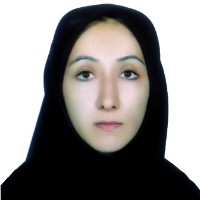An Overview of Amyotrophic Lateral Sclerosis (ALS) and Its Genetic Status
Amyotrophic Lateral Sclerosis (ALS) is the most common fatal motor neuron disease characterized by involvement of the combination of upper (UMNs) and lower (LMNs) motor neurons. The degeneration of LMNs and UMNs leads rapidly to progressive muscle atrophy and paralysis, dysphagia, dysarthria, fasciculations, muscle cramps, and finally death due to respiratory failure.
ALS is an adult-onset neurodegenerative disease; its age at onset (AAO) is usually 50-60 years. However, AAO of the disease is variable (1 - 94 years old). Mean survival of patients with ALS has been reported as 3-5 years from the disease onset. However, 10-20% of patients survive more than 10 years. The incidence and prevalence of ALS in the European population is 1–2 and 2-7 people per 100,000, respectively.
Due to the great clinical variability in ALS manifestations, the diagnosis of ALS can be challenging. Thus, the El Escorial criteria were developed based on clinical data to ALS diagnosis.
ALS can be categorized into different forms:
It can be classified into familial and sporadic based on the presence and absence of other patients in the family. Most ALS cases are sporadic (SALS) and only about 1-13% of ALS cases are familial (FALS).
It can be sub-grouped based on the mode of inheritance of the disease; autosomal dominant, autosomal recessive, X-linked, mitochondrial or de novo.
ALS can be categorized based on the age at onset of the disease: juvenile ALS; age at onset below 25 years, and adult ALS; the onset age is over 25 years old - usually the onset age of the disease is over 45 years old.
ALS can be classified based on the locus and gene involved in the development of the disease. To date, more than 40 ALS-causative genes have been identified. These loci are only responsible for about two-thirds of FALS and about 10% of SALS.
Molecular analyses of the known ALS genes have demonstrated that their encoded proteins are involved in several physiological pathways, including, oxidative stress, axonal transport, autophagy, proteins folding, glutamate excitotoxicity, RNA metabolism and involvement of non-neuronal cells (microglia, astrocytes and oligodendrocytes).
Among the ALS-causative known genes, five genes including SOD1, C9orf72, TARDBP, FUS/TLS and TBK1 seem to more important and account for about 15% of all ALS patients. Meanwhile, mutations of SOD1 and C9orf72 genes are detected in a significant percent of patients.
Superoxide dismutase 1 gene - SOD1 - is the first gene identified for ALS disease. Mutations of this gene have been observed in 20% (12-23%) of FALS cases and about 3% (1-7%) of SALS patients.
The repetitive sequence of six nucleotides (GGGGCC; G4C2)n in intron 1 of the C9orf72 gene was also associated with ALS. The number of G4C2 repeats in healthy people is less than 23, while in affected individuals, the number of these repetitions was more than 23 and up to 1500 and even more. The dynamics of such repetitions in this gene may be an explanation for the phenotypic variability and different penetrance of the disease in these families.
The cause of most ALS cases is not yet known, but it is certain that several cellular functions are disturbed in the motor neurons of these patients, which can probably lead to the degeneration of these neurons. It is clear that most of the genes responsible for ALS do not exclusively play a role in the development of this disease, and mutations in these genes are not only involved in the development of ALS, but also can result in the occurrence of other neurodegenerative disorders like frontotemporal dementia (FTD), hereditary spastic paraplegia (HSP), Parkinson disease, progressive supranuclear palsy, ataxia, corticobasal syndrome, and Huntington disease-like syndrome. So, understanding the pathogenesis of ALS is essential in developing diagnostic methods and providing new effective treatments in the clinical trials.
Here, we reviewed the clinical, epidemiologic and genetic of ALS and briefly explained those in Iran. Our results showed (a) the average incidence and prevalence of ALS were 0.42/100 000, and 1.57/100 000, respectively. (b) In contrast to European countries, mutations of SOD1 are the common cause of ALS in Iranian FALS patients; they are causative in approximately 30% of the FALS cases but mutations of C9orf72 are rare. (c) A significant difference in disease progression rate is observed between patients who used riluzole and those who did not.
Amyotrophic lateral sclerosis , ALS , SOD1 , C9orf72 , Iran
- حق عضویت دریافتی صرف حمایت از نشریات عضو و نگهداری، تکمیل و توسعه مگیران میشود.
- پرداخت حق اشتراک و دانلود مقالات اجازه بازنشر آن در سایر رسانههای چاپی و دیجیتال را به کاربر نمیدهد.



